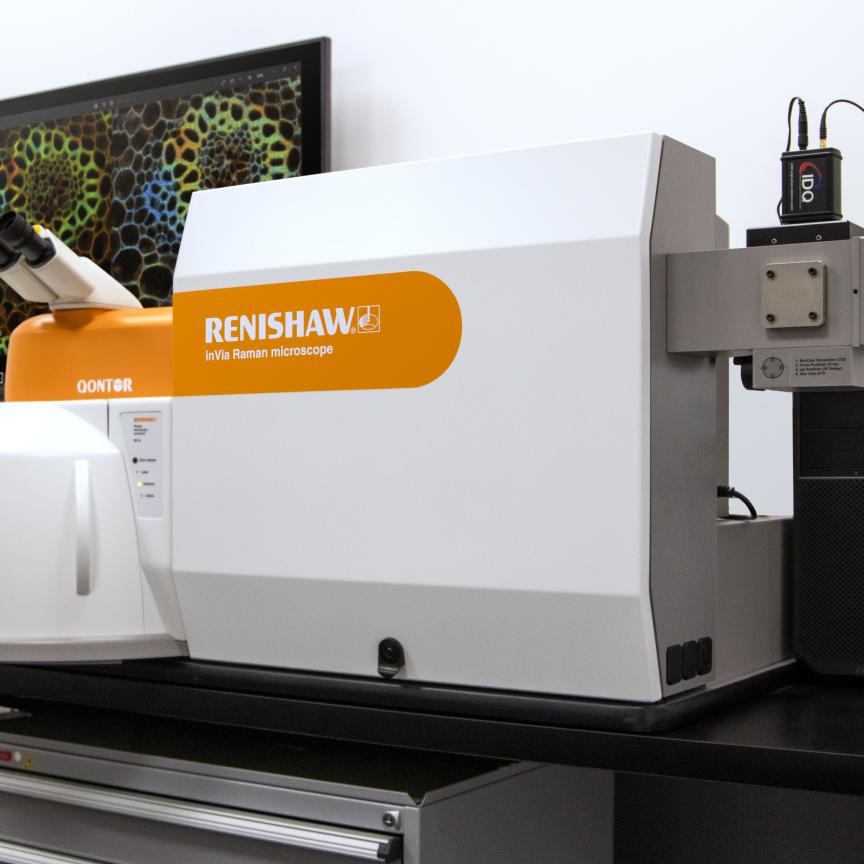Pro-Lite’s Dr Giorgia Marucci discusses the application of Raman spectroscopy in the cultural heritage field
Raman Spectroscopy: Almost Perfect
The first Raman spectrum I collected was from a sample of mammillary haematite in the Earth Science museum of my University: intense, sharp peaks and low noise. Unfortunately, the following years have taught me that collecting meaningful Raman spectra is not always as easy as my first measurement, especially when working in the cultural heritage field.
Cultural and natural heritage objects are today subject to scientific investigations to address questions concerning dating, raw material provenance, authentication, degradation processes and conservation planning. Raman spectroscopy is a technique particularly suitable in this application field for many reasons, beyond its ability to unambiguously identify compounds.
Firstly, it does not require any sample preparation, which allows measurements to be performed without the need to collect or destroy the specimen. Non-invasive and non-destructive measurements are essential requirements when working with historically and culturally unique pieces, such as a mediaeval manuscript or a Renaissance painting. Secondly, Raman spectroscopy’s selection rule (a change of polarizability in the molecule) determines one of the biggest advantages of the technique: water is not Raman active. Water is often present in organic materials included in the creation of an artefact, from the fibres of textiles and canvas, parchment of a manuscript, or wood of a board. So, Raman spectroscopy is preferred to infrared spectroscopy where water provides a broad absorption band at around 3200 cm-1 masking the contribution of other signals. Finally, the portability of the equipment available today on the market is another factor that makes the technique appealing for art investigators. In fact, the versatility of the technique has required more and more compact equipment to be brought to the field: from transportable to modular compact spectrometers coupled with fibre optics, to pistol-shaped handle devices if not hand-held. The availability of mobile instrumentation matches with the conservation needs to not move precious art objects from a museum, library or place of worship to the laboratory.
Please Don’t Touch: the Challenges of Working with Artworks
While there is much potential in Raman spectroscopy, it is not without room for improvement.
The compact instruments available on the market play the trade-off between size and performance. Sometimes they can still provide enough information for a specific application. As always, the effectiveness of equipment depends on the question we want to answer. It is well-known that Raman scattering is a rather weak phenomenon and its intensity is proportional to the intensity of the laser source (as well as its frequency). However, high power lasers can heat and burn the surface illuminated on the object, with consequential chemical and physical damage. Therefore, the need to control the power density of the laser accurately is another essential requirement, which makes it even harder to collect a good Raman signal.
Commercially available instruments are equipped with lasers, whose power is reduced by optical filters. It is found though that even the lowest output it is still too powerful when investigating some photosensitive materials, such as pigments that are sulphur/lead-based. The threshold value of power density for the safe exposure of these compounds is fractions of milliWatts. Based on published specifications, we often only know the maximum laser power; frequently, minimum power is not stated. Even if the laser could be attenuated to 5% of maximum, this could still be too much for delicate materials.
Compact instruments often have a spectral range that does not cover the region of interest for some of the compounds potentially included in the composition of the art piece. Specifically, amongst the art materials that are preferentially detected by Raman spectroscopy, there are pigments of mineral origin and inorganic compounds which have their Raman peaks below 250cm-1. These include metal oxides (e.g. red lead, white lead) and sulphides (e.g. orpiment). The edge filter included in the instrument to clean the signal from Rayleigh scattering often cuts off part of the desired Raman signal when this is at wavelength values very close to the laser source.
Compared with benchtop instrumentation that can have several laser wavelengths available to investigate the analyte with the most suitable source, compact Raman spectrometer set-ups only have one excitation source, usually at 532nm or 785nm, or in exceptional cases both. This represents a limitation since artworks have in many cases a complex composition that includes a variety of materials, organic and inorganic, with different scattering proprieties, and the laser source available might be not suitable to investigate all of them. This is the case when a compound absorbs that specific wavelength, or the spectrum is characterised by fluorescence and it is necessary to move toward a longer wavelength laser to avoid this side-effect.
Acquiring spectra in a museum, library, or place of worship can be very fascinating but does not make measurements straightforward. Ambient light in the background does affect the quality of the spectra. The measurement campaign has to take place in a specific time window, maybe the opening time of the museum. It implies that it must be established whether to run fewer measurements with longer integration times or higher averaging to have a better signal to noise ratio, or whether to sacrifice the quality of the spectra in order to have a higher number of spectra, to fully represent the item/items under study.
Visitors walking in the museum, the librarian stepping in the room, or the air conditioning system running in the gallery are all source of vibrations that easily cause the loss of focus if the object and the optics of the Raman spectroscopy set-up are not fully integrated into a stabilised system. With objects made of a variety of materials, it results in measurements focusing on the wrong area of the object, especially when the collection spot is very small, which in turn leads to poor quality data.
SERS & SORS: What is Coming Next in Raman Spectroscopy
Next year it will be 90th anniversary of the Nobel prize awarded to Sir Chandrasekhara Venkata Raman for the discovery of the effect that today bears his name. However, the technology exploiting this phenomenon is still under active development.
After attending the Infrared and Raman spectroscopy Discussion Group (IRDG) meeting in Lancaster last September, I realised that in the community of Raman spectroscopists, SERS (surface-enhanced Raman spectroscopy) represents an important sector in which research is being channelled. This is the case of the design of noble metal nanoparticles to enhance the Raman signal. There has been some attempt to use SERS on heritage objects, however, they all required some sort of sampling or contact with the artefact. Therefore, even if only a very small amount is removed, it cannot be considered non-invasive.
SORS (spatially offset Raman spectroscopy) is another of the interesting developments in the application of Raman spectroscopy. It consists of the acquisition of spectra with a certain spatial offset between the laser and the collection optics so that the signal recorded refers to the layers underneath the surface, at a depth proportional to the offset. If we consider that many artworks, such as paintings, have a layered structure(from the surface to the substrate: varnish; several paint layers; gypsum preparation of the canvas; and canvas) the SORS approach would be suitable to investigate the whole object rather than only its surface. However, the size scale of the layers is so thin (tens of microns) compared to other industrial or pharmaceutical systems which are analysed by SORS measurements, that another approach needs to be adopted. The coupling of Raman spectroscopy with confocal optics allows micro‐SORS defocussed measurements, which consists of measurements focusing on the artefact’s surface followed by measurements with the optics at a “defocused distance”, to investigate the layers underneath the surface and characterise the stratigraphy of the object. This, however, requires micro-motion mechanics, that in portable set-ups may not be available .
The Raman spectroscopy technique will still evolve for as long as the technology will allow it. Eventually other approaches like Raman spectroscopy mapping , which associates a Raman spectrum to a spatial position on the sample surface, and shifted excitation Raman difference spectroscopy (SERDS) will become suitable for the art and history sector with in situ measurements and portable and compact equipment.
In Conclusion: a Gap to Fill
The use of Raman spectroscopy applied to cultural heritage has been well established since the 1980s, however, the market still does not provide the perfect solution for this sort of application. The excuse of this being a niche sector is not good enough, because many of the concerns of this application apply also to other fields, such as the controlled power density of the sample on biological samples or photosensitive chemical compounds. Moreover, conservation of cultural heritage is a responsibility of the community, firstly, and, secondly, a human activity with its own market, including both public institutions and private business. Research on these objects has always existed and will still exist until we will become tired of seeking to understand our history, to be amazed by the beauty of our heritage and of the technological abilities of humans since the earliest time. Therefore, there are technical and instrumental needs that need to be addressed.
About the Author
Dr Giorgia Marucci is an Applications Specialist working in the spectroscopy & spectral Imaging team at Pro-Lite. Dr Marucci has a passion for both arts and science and combined these to good effect in her recently completed PhD in Applied Sciences at Northumbria University (Newcastle upon Tyne). Her research focussed on non-destructive and non-invasive portable techniques (Raman Spectroscopy, Fibre Optic Reflectance Spectroscopy and Multispectral Imaging) to investigate the palette of pigments used in medieval manuscripts’ miniatures and reconstruct the production techniques and the history of those unique objects.
About Pro-Lite Technology
Pro-Lite is a supplier of specialist equipment and services with a technical focus in photonics, in instruments for measuring light and the optical properties of materials and in optical spectroscopy and spectral imaging. Working together with Wasatch Photonics and Avantes, Pro-Lite supplies advanced, high sensitivity Raman spectrometers and turn-key spectrometer systems, while partners Photon etc provide an advanced hyperspectral Raman microscopy system.
For further details, please visit: http://www.pro-lite.co.uk/File/raman_spectroscopy.php
Dr Giorgia Marucci is applications specialist for spectroscopy and spectral imaging at Pro-Lite


